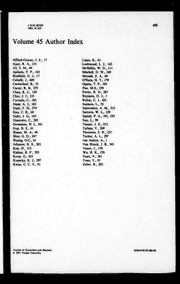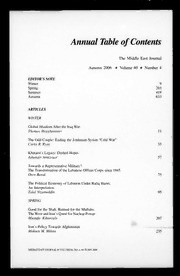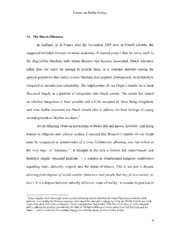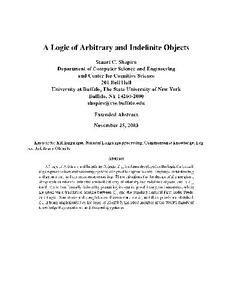
A Logic of Arbitrary and Indefinite Objects PDF
Preview A Logic of Arbitrary and Indefinite Objects
A Logic of Arbitrary and Indefinite Objects Stuart C. Shapiro Department of Computer Science and Engineering and Center for Cognitive Science 201 Bell Hall University at Buffalo, The State University of New York Buffalo, NY 14260-2000 shapiro@cse.buffalo.edu Extended Abstract November 25, 2003 Keywords: KRlanguages,NaturalLanguageprocessing,Commonsenseknowledge,Log- ics,ArbitraryObjects Abstract ALogicofArbitraryandIndefiniteObjects,L ,hasbeendevelopedasthelogicforknowl- A edgerepresentationandreasoningsystemsdesignedtosupportnaturallanguageunderstanding andgeneration,andcommonsensereasoning. ThemotivationsforthedesignofL aregiven, A alongwithaninformalintroductiontothetheoryofarbitraryandindefiniteobjects,andtoL A itself. L isthenformallydefinedbypresentingitssyntax,prooftheory,andsemantics,which A are given via a translation scheme between L and the standard classical First-Order Predi- A cate Logic. Soundness and completeness theorems are stated, and their proofs are sketched. L is being implemented as the logic of SNePS 3, the latest member of the SNePS family of A KnowledgeRepresentationandReasoningsystems. 1 Introduction 1.1 Motivations In this paper, we present a logic of arbitrary and indefinite objects, L , which we have devel- A oped as the logic for knowledge representation and reasoning systems designed to support natural language understanding and generation, and commonsense reasoning. L is based on, but is dif- A ferent from, both the logic of arbitrary objects of Fine [Fine,1983, Fine,1985a, Fine,1985b] and the ANALOG logic of Ali and Shapiro [Ali,1993, AliandShapiro,1993, Ali,1994]. L is be- A ingimplementedasthelogicofSNePS3[Shapiro,2000a],thelatestmemberoftheSNePSfamily [ShapiroandRapaport,1992,Shapiro,2000b,ShapiroandTheSNePSImplementationGroup,2002]. SNePS is a propositional semantic network in which every well-formed subexpression is a node in a network whose labeled arcs indicate the argument position of the node at the head of the arc withinthefunctionaltermwhichisthenodeatthetailendofthearc. Infact,sinceweviewpropo- sitionsasfirst-classmembersofthedomain,everynode,includingnodesthatdenotepropositions, is a term [Shapiro,1993]. Nevertheless, we feel that the first step in developing L as a logic for A SNePS 3 is to specify its syntax, semantics, and proof theory, and the best way to do that is with a “normal” linear syntax. We hope that others will find this version of L interesting and useful on A itsown,outsideofitsintendedhomeinSNePS3. Intheremainderofthissection,wewillgivesomemotivationsforthedevelopmentofL ,and A compareitwithsomepreviouslydevelopedlogics. Thiswillnecessitatedisplayingsomeformulas ofL beforeitssyntaxhasbeendefined. A Onemotivationisthedesireforauniformsyntaxintherepresentationofdifferentlyquantified sentences. Wewouldlikesentencesoftheformxiswhitetouniformlyberepresentedbyformulas of the form White(x) for ease of retrieval from a knowledge base. For example, for the question What is white?it should be as easy to retrieve every sheep or some sheep as it is to retrieve Dolly. The standard classical first-order logic, henceforth referred to as L , does not provide a uniform S representation. A logic with restricted quantifiers (L ) does use a uniform representation for uni- R versally and existentially quantified sentences, but it is not the same representation as for ground sentences. ThisisillustratedinTable1 A second motivation is the desire to simplify the problem of translating between natural lan- guage sentences and sentences of a formal knowledge representation, by maintaining the lo- cality of natural language phrases. In L and L , natural language phrases are split into sev- S R eral pieces, as they are in Minimal Recursion Semantics (MRS) [Copestakeetal.,1999]. How- ever, in L as well as in logics using “logical form” [Allen,1995, p. 228] or “complex-terms” A [JurafskyandMartin,2000, p. 555] (L ) they are left intact. For example, in Table 2, pieces C English L L L S R A DollyisWhite. White(Dolly) White(Dolly) White(Dolly) Everysheepiswhite. ∀x(Sheep(x) ⇒ White(x)) ∀x White(x) White(any x Sheep(x)) Sheep Somesheepiswhite. ∃x(Sheep(x)∧White(x)) ∃x White(x) White(some x ()Sheep(x)) Sheep Table 1: Some English sentences and their formalizations in several logics, illustrating uniform andnon-uniformsyntaxfordifferentquantifiers. SeeTable3fortheabbreviationsofthelogics. 1 Language Sentence L ∀x(Elephant(x) ⇒ ∃y(Trunk(y)∧Has(x,y))) S L ∀x ∃y Has(x,y) R Elephant Trunk MRS h0: every(x,h1,h2),h1: elephant(x),h2: some(y,h3,h4),h3: trunk(y),h4: has(x,y) L Has((cid:104)∀xElephant(x)(cid:105),(cid:104)∃yTrunk(y)(cid:105)) C L Has(any x Elephant(x),some y (x)Trunk(y)) A Table 2: Every elephant has a trunk in several logical languages. The underlined portion of each entryisthetranslationofatrunk. of formulas derived from the phrase a trunk are underlined. Even though L maintains locality C of phrases, it is an intermediate form, leaving quantifier scope undecided, which is appropriate for its intended use representing the semantics of isolated sentences, whereas L is a final form A with quantifier scope indicated, which is appropriate for its intended use in a knowledge base rep- resenting the integrated beliefs of some natural-language understanding agent. MRS provides a representation both for ambiguous, but constrained, quantifier scopes, and for fully-scoped sen- tences. The MRS entry in Table 2 is a fully-scoped version. Of course, the importance of this motivatingfactordependsonthedetailsoftheparsingandgenerationtechniquesused. A third motivation is the prospect of representing and reasoning about generalized quantifiers suchasmany,most,few,andboth[BarwiseandCooper,1981],whichisnotdoneinL orL ,but S R canbedoneinMRS,L ,orL 1 C A Afourthmotivationistheuseofstructuresharing,inwhichtermsthatoccurinmultipleplaces inonesentence,or,moreimportantly,inmultiplesentencesinoneknowledgebase,arestoredonly once (Referred to as the “Uniqueness Principle” in, for example, [ShapiroandRapaport,1992, §3.4]. See also [Sekaretal.,2001] for the importance of such structure sharing in automated de- duction). Since quantified terms in L are “conceptually complete” [AliandShapiro,1993]; they A canbesharedwithoutlosingtheiridentity. SuchcompletetermsdonotexistinL orL ,noreven S R inL wherenon-disambiguatedscopinginformationisinthecontextsurroundingtheoccurrences C ofcomplex-terms. Ithasbeensuggested2 thatMRSprovidesforstructuresharing. However,MRS is defined so that “the MRS structure forms a tree ..., with a single root that dominates every other node, and no nodes having more than one parent” [Copestakeetal.,1999, p. 8]. Indeed, the MRS techniqueofimplicitconjunctionofnodeswiththesamehandlewouldmakeitimpossibletoshare only one conjunct of a group. Nevertheless, MRS may be seen as a notational variant of L plus R generalizedquantifiers,andonlyafewsmallsyntacticchangesarerequiredtochangeMRSintoa similarnotationalvariantofL . Thesechangeswillbeexplainedinthefullversionofthispaper. A A fifth motivation is the desire to use a simple form of subsumption reasoning [Woods,1991] among terms of the logic. Subsumption reasoning is at the heart of description logics (see, e.g., [WoodsandSchmolze,1992]). However, description logics use a special representation of con- cepts and relations, and a separate representation of logical formulae in which concepts appear as unarypredicatesandrelationsappearasbinaryrelations. InL ,thesubsumptionrelationmayhold A between quantified terms such as (any x Elephant(x)) and (any x Albino(x)∧Elephant(x)), which,withthehelpofstructuresharing,representconcepts,whilebeingsmoothlyintegratedina 1However,theinclusionofgeneralizedquantifiersinL willnotbediscussedinthispaper. A 2byananonymousreviewerofaversionofthispaper 2 L L MRS L L S R C A Uniformsyntax No No No Yes Yes Localityofphrases No No No Yes Yes Finalform,includingquantifierscoping Yes Yes Yes No Yes Potentialforgeneralizedquantifiers No No Yes Yes Yes Possibilityofstructuresharing No No No No Yes Subsumptionrelationholdsonterms No No No No Yes Table3: Asummary ofwhich logicssatisfy whichmotivations. L =Standard classicalfirst-order S logic; L = Logic with restricted quantifiers; MRS = Minimal Recursion Semantics; L = Logic R C withcomplexterms;L =Logicofarbitraryandindefiniteobjects. A fullfirst-orderpredicatelogic. Thesemotivations,andwhichofthelogicssatisfythem,aresummarizedinTable3. The differences between L and Fine’s logic of arbitrary objects are discussed in the next A section. ANALOG [Ali,1993, AliandShapiro,1993, Ali,1994] could not distinguish between formulasstructuredlike∀x¬A(x)and¬∀xA(x). See§2toseehowthisiscorrectedinL . A 1.2 Arbitrary Objects A theory of arbitrary objects has been developed and defended by Fine [1983, 1985a, 1985b], “uponthebasisofwhichasatisfactoryexplanationoftheruleofuniversalgeneralizationcouldbe given” [Fine,1985b, p. vii]. “An arbitrary object has those properties common to the individual objectsinitsrange”[Fine,1985b,p. 5]. Theideaofusingsucharbitraryobjectshasalsobeentried by researchers in knowledge representation under the rubric “typical member,” most notably by Fahlman [1979]. The general approach was analyzed in [Shapiro,1980], along with its problems and difficulties. The advantage of Fine’s approach over the previous KR approaches is its firm logicalfoundation. Finedistinguishestwoclassesofarbitraryobjects,independentanddependent[Fine,1985b,p. 18]. An independent arbitrary object is characterized only by its range of values. For example, a mightbethearbitraryrealnumber. Itsrangeofvaluesisalltheindividualrealnumbers. Dependent arbitraryobjectsarecharacterizedbytheirrangeandtheotherarbitraryobjectstheyaredependent on. For example, one dependent arbitrary object is a3, which “assumes the value j when and only √ whenaassumesthevalue 3 a”[Fine,1985b,p. 17]. Thephrase“characterized(only)by”ismade moreprecisebyidentitycriteria. Ifaandbareindependentarbitraryobjects,“wesaythata = biff theirrangesarethesame...[if]aandbaredependent[arbitrary]objects...weshallsaythata = b ifftwoconditionsaresatisfied. Thefirstisthattheyshoulddependuponthesamearbitraryobjects ...The second is that they should depend upon these objects in the same way” [Fine,1985b, p. 18]. In some ways, independent arbitrary objects correspond to universally quantified variables in classicallogics,anddependentarbitraryobjectstoexistentiallyquantifiedvariables: “Considerthe sentence ∀x∃yFxy. It is true ...if, for a an unrestricted A-object [i.e. an arbitrary object whose range is all the members of the domain], we can find a totally defined A-object b dependent upon aaloneforwhichFabistrue”[Fine,1985b,p. 46]. 3 We, however, want to detach the notion of dependency from the notion of correspondence to existentially quantified variables in classical logics, so that we can have objects that correspond to existentiallyquantifiedvariablesinclassicallogicsthatyetarenotdependentonanyotherarbitrary object. We want this so that, among other benefits, we can distinguish among the formalizations ofthefollowingsentences. 1. Everysheepiswhite. 2. Somesheepiswhite. 3. Everysheepisnotwhite. 4. Somesheepisnotwhite. 5. Itisnotthecasethateverysheepiswhite. 6. Itisnotthecasethatsomesheepiswhite. We will use “arbitrary object” for the terms that correspond to universally quantified variables in classical logics, whether or not they are dependent on other arbitrary objects. Arbitrary objects will be used to formalize sentences (1), (3), and (5) above. We will use “indefinite object” for the terms that correspond to existentially quantified variables in classical logics, whether or not they are dependent on any arbitrary objects. (An indefinite object will never be dependent on any indefiniteobjects.) Indefiniteobjectswillbeusedtoformalizesentences(2),(4),and(6). Our arbitrary and indefinite objects will have restrictions to specify their ranges and the other arbitraryobjectstheydependon. Inaddition,eachindefiniteobjectwillhaveaset(perhapsempty) of arbitrary objects on which it explicitly depends, called its “supporting variables”. Similarly to Fine’s criteria, we will consider two arbitrary objects to be identical if they have the same restrictions, and these involve the same other arbitrary objects. However, an indefinite object occurringinonesentence(Thisuseof“sentence”willbedefinedbelow.) willneverbeconsidered to be identical to an indefinite object occurring in another sentence. This is to make invalid such argumentsas Lucysawsomedog. Somedogiswhite. Therefore,Lucysawsomewhitedog. Section 2 contains an informal description of some unusual features of L . Section 3 contains A aformaldefinition. L 2 An Informal Introduction to A 2.1 Arbitrary Objects, Binding, Capture, and Closure We will express an arbitrary object, x, with the restriction R(x), as (any x R(x)), so every sheep is white is formalized3 as White((any x Sheep(x))). We will allow the omission of redundant parentheses,sothisbecomesWhite(any xSheep(x)). Similarly, every sheep is a mammal is formalized as Mammal(any x Sheep(x)). In accord with the motivation of using L in an integrated knowledge base, if these two wffs are combined A intoWhite(anyxSheep(x))∧Mammal(anyxSheep(x))thetwooccurrencesof(any x Sheep(x)) are literally two occurrences of the same variable, and denote the same arbitrary object. The ar- bitrary terms (any x Sheep(x)) and (any x Raven(x)), however, we deem to be incompatible. 3We realize that a natural language sentence cannot be represented independently of context. Nevertheless, the practiceofassociatingoneisolatednaturallanguagesentencewithonesentenceofalogiciscommonwhendefining alogic,andweshallfollowthatpracticeinthispaper. 4 Therefore,White(any x Sheep(x))andBlack(any x Raven(x))cannotbecombinedintoawell- formedformulaunlessoneofthevariablesisrenamed. Forexample, White(any x Sheep(x))∧Black(any y Raven(y))iswell-formed,andmeanseverysheepiswhite andeveryravenisblack. When a wff with a bound variable, such as White(any x Sheep(x)), is combined with a wff with the same variable free, such as Mammal(x), the binding of the bound variable captures the freeone. SoWhite(any x Sheep(x))∧Mammal(x)isthesamewffas White(any x Sheep(x))∧Mammal(any x Sheep(x)). If you want to avoid this, rename all oc- currences of x in one of the wffs. The wff White(any x Sheep(x))∧Mammal(y) contains a boundoccurrenceofthevariablexandafreeoccurrenceofthevariabley. Since bound occurrences of a variable capture free occurrences of the same variable, and all occurrences of a variable in a well-formed formula are compatible, all but one occurrence of (any x R(x))maybeabbreviatedasx. Thus,White(any x Sheep(x))∧Mammal(x)isofficially anabbreviationofWhite(any x Sheep(x))∧Mammal(any x Sheep(x)). Sincethebindingsofboundvariablestakewidescopeoverthewff,¬White(any x Sheep(x)) means that every sheep is not white. To keep variable bindings from rising too far, we use the clo- sureoperator(cid:98) ...(cid:99),whichcontainsthescopeofthevariablex. Thus¬(cid:98) White(any x Sheep(x))(cid:99) x x meansitisnotthecasethateverysheepiswhite. Thebindingofaclosed,boundvariabledoesnotcapturefreeoccurrencesofthesamevariable outside its closure. So the wff4 Odd(any x Number(x))∨Even(x) which is an abbreviation of Odd(any x Number(x))∨Even(any x Number(x)) means every number is odd or even, while (cid:98) Odd(any x Number(x))(cid:99)∨(cid:98) Even(any x Number(x))(cid:99) means either every number is odd or x x everynumberiseven. 2.2 Indefinite Objects We will express an indefinite object, x, dependent on the arbitrary objects y ,...,y , with the 1 n restriction R(x), as (some x (y ,...,y )R(x)), where n ≥ 0. Issues of abbreviations, binding, 1 n capture,andclosureapplytoindefinitevariablesinthesamewayastheydotoarbitraryvariables. Soafewexamplesshouldsufficeforintroducingindefinitevariables. Has(any x Elephant(x),some y (x)Trunk(y))meanseveryelephanthasa(itsown)trunk. Note that the occurrence of x in the list of variables that y depends on is an abbreviated form of (any x Elephant(x)),andisthesamevariableasisthefirstargumentofHas. ¬White(some x ()Sheep(x)) means some sheep is not white. ¬(cid:98) White(some y ()Sheep(y))(cid:99) y meansitisnotthecasethatsomesheepiswhite. (any x Number(x)) < (some y (x)Number(y)) meanseverynumberhassomenumberbiggerthanit,or,inL ,∀x∃y(x < y). S (any x Number(x)) < (some y ()Number(y)),whereyhasnosupportingvariables,meanssome numberisbiggerthaneverynumber,or,inL ,∃y∀x(x < y). S 2.3 Tricky Sentences Thereareseveralclassesofsentencesthathavebeendiscussedintheliteratureasbeingparticularly difficulttorepresentinL . Themostnaturalapparentrepresentationofthedonkeysentence,Every S 4Theseexamplesarebasedonadiscussionin[Fine,1985b,p. 9ff]. 5 farmerwhoownsadonkeybeatsit [Geach,1962]inL is S ∀x[(Farmer(x)∧∃y(Donkey(y)∧Owns(x,y))) ⇒ Beats(x,y)] However, the occurrence of y in the consequent is outside the scope of its quantifier. The only logicallycorrectrepresentationofthedonkeysentenceinL is S ∀x∀y[(Farmer(x)∧Donkey(y)∧Owns(x,y)) ⇒ Beats(x,y)] but this has been objected to because it quantifies over all farmers and all donkeys, rather than just donkey-owning farmers. The variable capturing feature of L , which is associated with its A intended structure-sharing representation in SNePS 3 captures the sense of the donkey sentence correctlyasBeats(any x Farmer(x)∧Owns(x,some y (x)Donkey(y)),y) Anothertrickyclassofsentencesarethosethatrequirebranchingquantifiers,forexampleSome relativeofeachvillagerandsomerelativeofeachtownsmanhateeachother. (See[McCawley,1981, p. 449].) AnattempttorepresentthissentenceinL is S ∀v∃x∀w∃y[(Villager(v)∧Relative(x,v)∧Townsman(w)∧Relative(y,w)) ⇒ Hates(x,y)] However, there is no way to express this without making at least one of x or y dependent on both v andw,whichdoesnotseemwarranted. InL ,thissentencecanberepresentedcorrectlyas A Hate(some x (any v Villager(v))Relative(x,v),some y (any w Townsman(w))Relative(y,w)) The tricky sentences discussed in this subsection are represented the same way in ANALOG [Ali,1993, AliandShapiro,1993, Ali,1994] as they are in L , but ANALOG does not have the A closureoperator,andsocannotdistinguishsomesheepisnotwhitefromitisnotthecasethatsome sheep is white nor every number is odd or even from either every number is odd or every number iseven. L 3 , The Logic of Arbitrary and Indefinite Objects A L 3.1 Syntax of A AtomicsymbolsThefollowingsetsofatomicsymbolsshouldbedisjoint: Individualconstants SuchasJohn,Clyde,andsavanna. Variables Suchasx,y,andz,possiblywithsubscripts,suchasx ,andx . 1 2 Determiners any andsome. Functionsymbols Such as son of and successor, each with some arity, which may beshownasasuperscript,suchasson of2 andsuccessor1. Predicatesymbols Such as Elephant and On, each with some arity, which may be shownasasuperscript,suchasElephant1 andOn2. Quantifiedterms 1. If x is a variable and A(x) is a formula containing one or more occurrences of x open and free, then (any x) and (any x A(x)) are arbitrary terms. x is called the variable of those arbitrary terms. any is called their determiner. A(x) is called the restriction of the arbitrary term(any xA(x)),andofthevariablex. All open occurrences of the variable of an arbitrary term are bound in the arbitrary term, all closedoccurrencesremainclosed,andalloccurrencesofothervariablesthatarefree(bound, open,closed)inA(x)arefree(bound,open,closed)in(any xA(x)). 6 2. If x is a variable, q ,...,q are variables or arbitrary terms, and A(x) is a formula con- 1 n taining one or more occurrences of x open and free, then (some x ()), (some x ()A(x)), (some x (q ,...,q )), 1 n and (some x (q ,...,q )A(x)) are indefinite terms. x is called the variable of those indef- 1 n inite terms. some is called their determiner. A(x), where included, is called the restriction of the indefinite term and of the variable, and q ,...,q , where included, are called the 1 n supportingvariablesoftheindefiniteterm,andofthevariable. All open occurrences of the variable in an indefinite term are bound, All closed occurrences remain closed, and all occurrences of other variables that are free (bound, open, closed) in thesupportingvariablesortherestrictionofanindefinitetermarefree(bound,open,closed) intheindefiniteterm. 3. arbitrarytermsandindefinitetermsarequantifiedterms,andnothingelseis. 4. Thequantifiedtermsinasetofquantifiedtermsarecompatibleifeither (a) Notwotermshavethesamevariable,or (b) whenevertwotermshavethesamevariable,then: i)theyhavethesamedeterminer;ii) they have the same restriction; and iii) if they are indefinite terms they also have the samesupportingvariables. Otherwise,theyarecalledincompatible. We will say that the set, α, of quantified terms is compatible with the set, β, of quantified termsifandonlyifthequantifiedtermsinα∪β arecompatible. Terms 1. Everyindividualconstantisaterm. 2. Every variable is a term. For every variable, x, the occurrence of x in the term x is free and open. 3. Everyquantifiedtermisaterm. 4. If fn is a function symbol of arity n, t ,...,t are terms, and all open quantified terms in 1 n t ,...,t arecompatible,thenfn(t ,...,t )isaterm. 1 n 1 n Anyopenvariablesthatareboundinanyt ,1 ≤ i ≤ n,areopenandboundinfn(t ,...,t ), i 1 n any other variables that are free in any t ,1 ≤ i ≤ n are free in fn(t ,...,t ), and all i 1 n occurrences of variables that are open (closed) in t ,1 ≤ i ≤ n, remain open (closed) in i fn(t ,...,t ). 1 n 5. Nothingelseisaterm. Atomic formulas If Pn is a predicate symbol of arity n, t ,...,t are terms, and all open quanti- 1 n fiedtermsint ,...,t arecompatible,thenPn(t ,...,t )isanatomicformula. 1 n 1 n Any open variables that are bound in any t ,1 ≤ i ≤ n, are open and bound in Pn(t ,...,t ), i 1 n anyothervariablesthatarefreeinanyt ,1 ≤ i ≤ narefreeinPn(t ,...,t ),andalloccurrences i 1 n ofvariablesthatareopen(closed)int ,1 ≤ i ≤ n,remainopen(closed)inPn(t ,...,t ). i 1 n 7 Well-formedformulas(wffs) 1. Everyatomicformulaisawell-formedformula. 2. IfA(x)isawffcontainingopenboundoccurrencesofthevariablex,then(cid:98) A(x)(cid:99)isawff, x calledtheclosureofA(x)withrespecttox. All open occurrences of the variable x in A(x) are closed in (cid:98) A(x)(cid:99). Other open (closed, x bound,free)(occurrencesof)variablesinA(x)remainsoin(cid:98) A(x)(cid:99). Notethateveryclosed x occurrenceofavariableisofaboundvariable. 3. IfAisawff,then(¬A)isawff. Any(occurrencesof)variablesthatarefree(bound,open,closed)inAarefree(bound,open, closed)in(¬A). 4. If A and B are wffs, and the set of open quantified terms in A is compatible with the set of openquantifiedtermsinB,then(AoB)isawff,whereoisoneof∧,∨,⇒,or⇔. Any open variables that are bound in A or B are open and bound in (A o B), any other variablesthatarefreeinAorB arefreein(AoB),andalloccurrencesofvariablesthatare open(closed)inAorB remainsoin(AoB). 5. Nothingelseisawell-formedformula. Sentences 1. Anywffallofwhosevariablesareboundisasentence. 2. Asentencecontaininganopenoccurrenceofavariableisagenericsentence. 3. Asentencecontainingnoopenoccurrenceofavariableisanon-genericsentence. Theorem1 If σ is the set of open quantified terms of any sentence of L , or of any well-formed A subformula of a sentence of L , or of any term occurring in a sentence of L , then the A A quantifiedtermsinσ arecompatible. Proof: By the definition of a sentence, all the variables in a sentence are bound. The rest of theproofisbystructuralinductionontheformationofterms,atomicformulas,andwffs. The significance of Theorem 1 is that all the open quantified terms in a sentence or in a subformula of a sentence that share a variable are occurrences of the same term. The scope of the variable of a quantified term in a sentence in which the variable is open is the entire sentence, but the scope of x in a closed formula (cid:98) A(x)(cid:99) is limited to that closed formula. x Thisobservationwillbereinforcedbythetranslationrulesin§3.2. GroundExpressions Any term, wff, or sentence that contains no variables is called a ground term,wff,orsentence,respectively. Abbreviations 1. In any wff containing a set of bound quantified terms with the same variable, all but one of thetermsmaybeabbreviatedasjustthevariable. 2. Parentheses may be omitted wherever they are not needed. In particular, the outer parenthe- sesofaquantifiedtermmaybeomittedwhenevernoconfusionresults. 3. Any quantified term of the form (any x A (x)∧···∧A (x)) or (some x φ A (x)∧···∧ 1 n 1 A (x)) may be abbreviated as (any x A (x) ... A (x)) or (some x φ A (x) ... A (x)), n 1 n 1 n respectively. 8 3.1.1 Examples Thissectionhasbeenomittedfromthisextendedabstract. See§2forexamples. L L 3.2 Translation between and A S To show that the language ofL includesL , the standard, classical first-order logic, and to show A S the correctness of the rules presented in §3.4, we provide translations between the wffs of L and A thoseofL . S 3.2.1 TranslationfromL toL A S ThetranslationfromL toL istobedonetop-downstartingwithsentences. Nohighernumbered A S ruleistobeappliedunlessnolowernumberedrulecanapply. 1. IfnoboundquantifiertermoccursinA,thentr (A) = A. AS 2. tr ((cid:98) A(cid:99)) = tr (A),foranyvariablex. AS x AS 3. Ifnoopenboundquantifiertermoccursin¬A,thentr (¬A) = ¬tr (A). AS AS 4. IfnoopenboundquantifiertermoccursinbothA(x)andB(y), thentr(A(x)oB(y)) = tr(A(x))otr(B(y)),whereoisoneof∧,∨,⇒,or⇔. 5. tr (A((some x (q ,...,(any q C(q )),...,q )B(x,q ,...,q )))) AS 1 i i n 1 n = ∀q tr (C(q ) ⇒ A((some x (q ,...,q ,q ,...,q )B(x,q ,...,q )))), i AS i 1 i−1 i+1 n 1 n whetherornotB(x,q ,...,q )actuallyoccurs,andwheretherighthandsideisobtainedby 1 n replacingallopenoccurrencesof(any q C(q ))inAbyq . i i i 6. tr (A((some x ()))) = ∃x tr (A(x)),wheretherighthandsideisobtainedbyreplacing AS AS allopenoccurrencesof(somex())inAbyx. 7. tr (A((some x ()B(x)))) = ∃x tr (B(x)∧A(x)),wheretherighthandsideisobtained AS AS byreplacingallopenoccurrencesof(somex()B(x))inAbyx. 8. tr (A((any x))) = ∀x tr (A(x)), where the right hand side is obtained by replacing all AS AS openoccurrencesof(any x)inAbyx. 9. tr (A((any x B(x)))) = ∀x tr (B(x) ⇒ A(x)),wheretherighthandsideisobtainedby AS AS replacingallopenoccurrencesof(any xB(x))inAbyx. Examples Thissectionhasbeenomittedfromthisextendedabstract. 3.2.2 TranslationfromL toL S A Totranslatefromawff,F,ofL toone,tr (F),ofL ,followthefollowingsteps,inorder. S SA A 1. Renamethevariablesapartsothatnotwoquantifiersgovernthesamevariable. 2. Change every subformula F of the form ∃xA(x) to ∃xA((some x (v ,...,v ))), where 1 n (v ,...,v )isalistofalltheuniversallyquantifiedvariableswithinwhosescopeF is. 1 n 9
The list of books you might like

Believe Me

As Good as Dead

Shatter Me Complete Collection (Shatter Me; Destroy Me; Unravel Me; Fracture Me; Ignite Me)

The Sweetest Oblivion (Made Book 1)
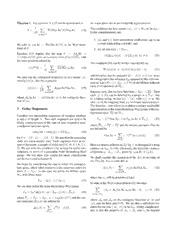
DTIC ADA475667: Finite Heisenberg-Weyl Groups and Golay Complementary Sequences
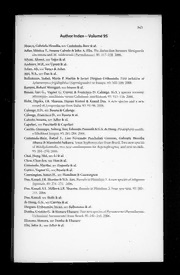
Mycotaxon 2006: Vol 95 Index

Travel and Adventure in South-East Africa:
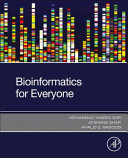
Bioinformatics for Everyone

Lars Gustaf Andersson 2012-01-13
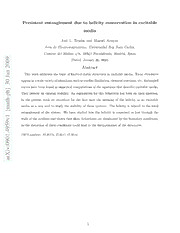
Persistent entanglement due to helicity conservation in excitable media
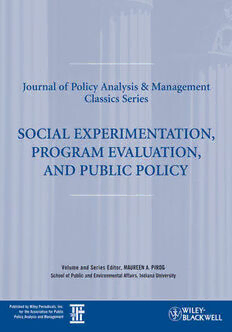
Social Experimentation, Program Evaluation, and Public Policy
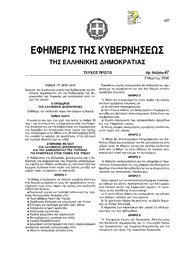
Greek Government Gazette: Part 1, 2006 no. 47
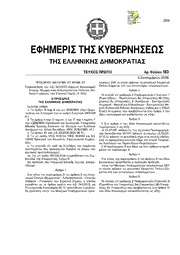
Greek Government Gazette: Part 1, 2006 no. 183

Vitis vinifera subsp. vinifera cv. Caladoc
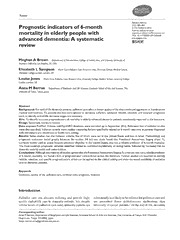
Prognostic indicators of 6-month mortality in elderly people with advanced dementia: A systematic review.
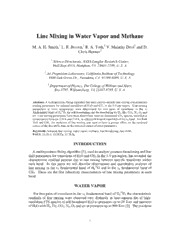
Line Mixing in Water Vapor and Methane
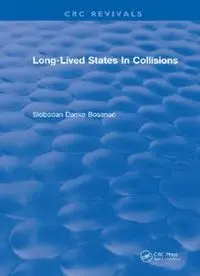
Long Lived States In Collisions
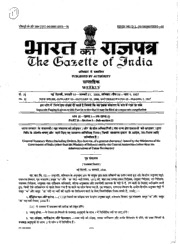
Gazette of India, 2006, No. 207
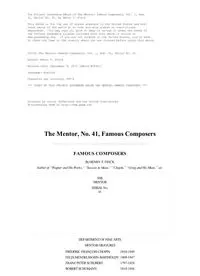
The Mentor No 41 Famous Composers by Henry T Finck

Die Freiheit der Meere und der Künftige Friedensschluß
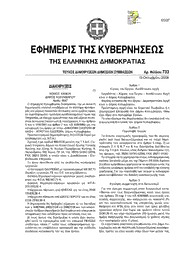
Greek Government Gazette: Part 7, 2006 no. 733
